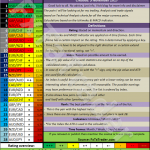The weeks ago, when we showed “What The Death Of A Nation Looks Like: Venezuela Prepares For 720% Hyperinflation”, we said that after looking at a chart of Venezuela’s upcoming hyperinflation…

…a hyperinflation in which the soaring stock market has failed to keep pace with the collapsing currency, thereby mocking all erroneous thought experiments that under hyperinflation being long the stock market is a sure hedge to currency destruction…

… we joked that it is unclear just where the country will find all the paper banknotes it needs for all its new currency.
After all, central-bank data shows Venezuela more than doubled the supply of 100-, 50- and 2-bolivar notes in 2015 as it doubled monetary liquidity including bank deposits. Supply has grown even as Venezuela has fewer U.S. dollars to support new bolivars, a result of falling oil prices.
This question, as morbidly amusing as it may have been to us if not the local population, became particularly poginant yesterday, when for the first time, one US Dollar could purchase more than 1000 Venezuela Bolivars on the black market.

And, as if on cue, the WSJ answered. As it turns out we were not the only ones wondering how the devastated “socialist paradise” gets its exponentially collapsing paper currency, which in just the past month has lost 17% of its value.
The answer: 36 Boeing 747s.
From the WSJ:
Millions of pounds of provisions, stuffed into three-dozen 747 cargo planes, arrived here from countries around the world in recent months to service Venezuela’s crippled economy.
But instead of food and medicine, the planes carried another resource that often runs scarce here: bills of Venezuela’s currency, the bolivar.
The shipments were part of the import of at least five billion bank notes that President Nicolás Maduro’s administration authorized over the latter half of 2015 as the government boosts the supply of the country’s increasingly worthless currency, according to seven people familiar with the deals.
More planes are coming: in December, the central bank began secret negotiations to order 10 billion more bills, five of these people said, which would effectively double the amount of cash in circulation. That order alone is well above the eight billion notes the U.S. Federal Reserve and the European Central Bank each print annually—dollars and euros that unlike bolivars are used world-wide.
This means that Venezuela’s hyperinflation, already tentatively estimated at 720%, will likely add on a few (hundred) zeroes by this time next year. It is also quite likely that Venezuela the country, as we know it now, will no longer exist because once any country is swept up in hyperinflationary rapids two things occur like clockwork: social uprisings and political coups.












Leave A Comment